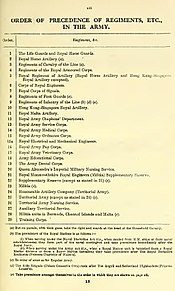
A rifleman is an infantry soldier armed with a rifled long gun. Although the rifleman role had its origin with 16th century hand cannoneers and 17th century musketeers, the term originated in the 18th century with the introduction of the rifled musket. By the mid-19th century, entire regiments of riflemen were formed and became the mainstay of all standard infantry, and rifleman became a generic term for any common infantryman.

The uniforms of the British Army currently exist in twelve categories ranging from ceremonial uniforms to combat dress. Uniforms in the British Army are specific to the regiment to which a soldier belongs. Full dress presents the most differentiation between units, and there are fewer regimental distinctions between ceremonial dress, service dress, barrack dress and combat dress, though a level of regimental distinction runs throughout.

A rifle regiment is a military unit consisting of a regiment of infantry troops armed with rifles and known as riflemen. While all infantry units in modern armies are typically armed with rifled weapons the term is still used to denote regiments that follow the distinct traditions that differentiated them from other infantry units.
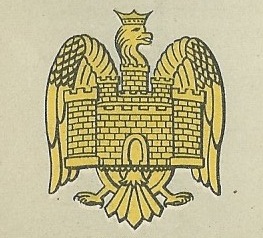
The Bedfordshire Yeomanry was a Yeomanry regiment of the British Army. Serving intermittently between 1797 and 1827, it was re-raised in 1901 for the Second Boer War. It participated in the First World War before being converted to an artillery regiment. It served in the Second World War. Its lineage was maintained by 201 Battery, 100th (Yeomanry) Regiment Royal Artillery until that unit was placed in suspended animation in 2014.
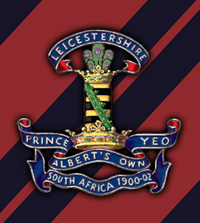
The Leicestershire Yeomanry (Prince Albert's Own) was a yeomanry regiment of the British Army, first raised in 1794 and again in 1803, which provided cavalry and mounted infantry in the Second Boer War and the First World War and provided two field artillery regiments of the Royal Artillery in the Second World War, before being amalgamated with the Derbyshire Yeomanry to form the Leicestershire and Derbyshire (Prince Albert's Own) Yeomanry in 1957. The regiment's lineage is currently perpetuated by E (Leicestershire and Derbyshire Yeomanry) Squadron of the Royal Yeomanry.

The Lanarkshire Yeomanry was a yeomanry regiment of the British Army, first raised in 1819, which served as a dismounted infantry regiment in the First World War and provided two field artillery regiments in the Second World War, before being amalgamated into The Queen's Own Lowland Yeomanry in 1956. Its lineage was revived by B Squadron, the Scottish Yeomanry in 1992 until that unit was disbanded in 1999.
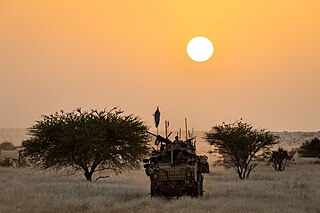
There are 13 cavalry Regiments of the British Army each with its own unique cap badge, regimental traditions, and history. Of the currently nine regular cavalry regiments, two serve as armoured regiments, three as armoured cavalry regiments, three as light cavalry, and one as a mounted ceremonial regiment. There are also four yeomanry regiments of the Army Reserve, of these, three serve as light cavalry and one as an armoured regiment. Each yeomanry light cavalry unit has been paired with a regular unit of the same role, the armoured yeomanry unit is paired with the two regular armoured units. All except the Household Cavalry are part of the British Army's Royal Armoured Corps.

The Royal Wiltshire Yeomanry (RWY) was a Yeomanry regiment of the Kingdom of Great Britain and the United Kingdom established in 1794. It was disbanded as an independent Territorial Army unit in 1967, a time when the strength of the Territorial Army was greatly reduced. The regiment lives on in B Squadron of the Royal Wessex Yeomanry.

The Volunteer Force was a citizen army of part-time rifle, artillery and engineer corps, created as a popular movement throughout the British Empire in 1859. Originally highly autonomous, the units of volunteers became increasingly integrated with the British Army after the Childers Reforms in 1881, before forming part of the Territorial Force in 1908. Most of the regiments of the present Army Reserves Infantry, Artillery, Engineers and Signals units are directly descended from Volunteer Force units.

The Northumberland Hussars was a Yeomanry regiment of the British Army, transferred to the Royal Artillery for the duration of the Second World War. It was disbanded as an independent Territorial Army unit in 1967, a time when the strength of the Territorial Army was greatly reduced. The regiment's name lives on in the title of the command and support squadron of the Queen's Own Yeomanry (QOY), a Formation Reconnaissance Regiment based in Newcastle upon Tyne.
All units of the Canadian Armed Forces have an order of precedence that determines seniority; it often decides such matters as which unit forms up to the right of other units on a ceremonial parade, or the order in which marches or calls are played at a mess dinner.

The South Nottinghamshire Hussars is a unit of the British Army formed as volunteer cavalry in 1794. Converted to artillery in 1922, it presently forms part of 103 Regiment, Royal Artillery.
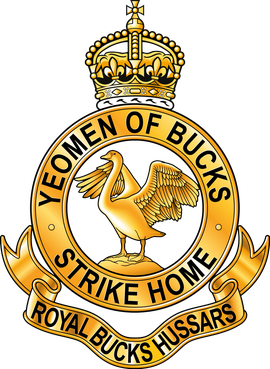
The Royal Buckinghamshire Yeomanry is an Operational Hygiene Squadron of the Royal Logistic Corps, originally formed as cavalry in 1794, and has also served in artillery and signals roles. The lineage is continued by 710 Operational Hygiene Squadron, Royal Logistic Corps.
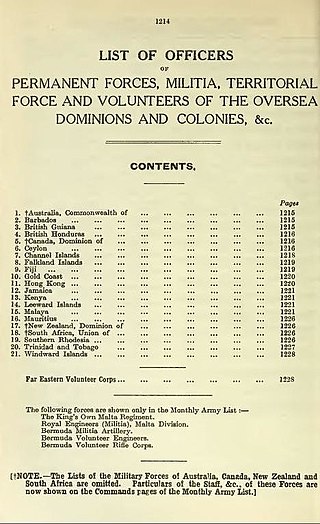
The British Colonial Auxiliary Forces were the various military forces of Britain's colonial empire which were not considered part of the British military proper.
During the First World War the British Armed Forces was enlarged to many times its peacetime strength. This was done mainly by adding new battalions to existing regiments. Although sometimes identified by shoulder titles, generally the new battalions could not be identified from appearance. Consequently, the units in this list have been assembled considering only those as having a uniquely different cap badge.

The page contains the current structure of the British Army. The British Army is currently being reorganised to the Future Soldier structure.
Future Soldier is a reform of the British Army resulting from the Integrated Review of Security, Defence, Development and Foreign Policy published in March 2021. The aim of the reform is to create a more lethal, agile and expeditionary force, able to fight and win wars and to operate in the grey-zone between peace and war. Future Soldier was published on 25 November 2021 and deals with the organizational changes of the British Army, with changes to personnel and equipment were set out in the Defence in a Competitive Age paper published on 22 March 2021.

